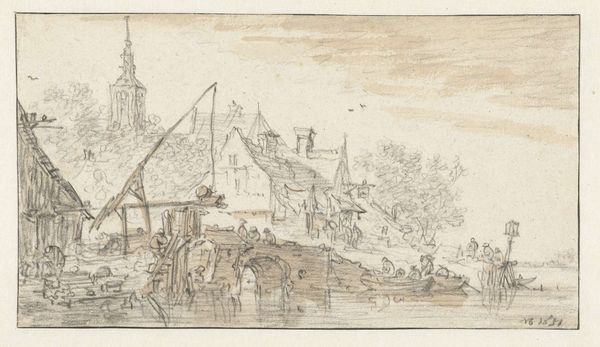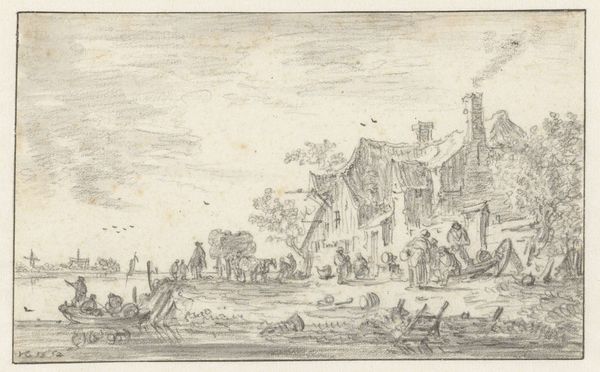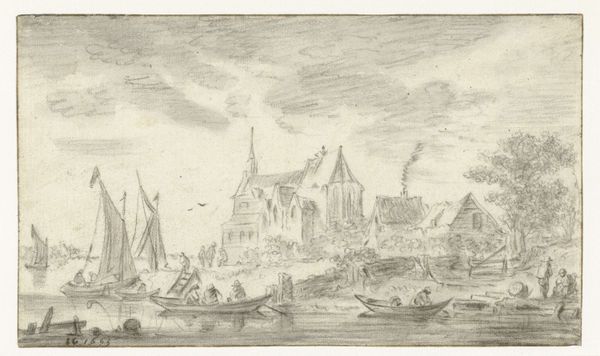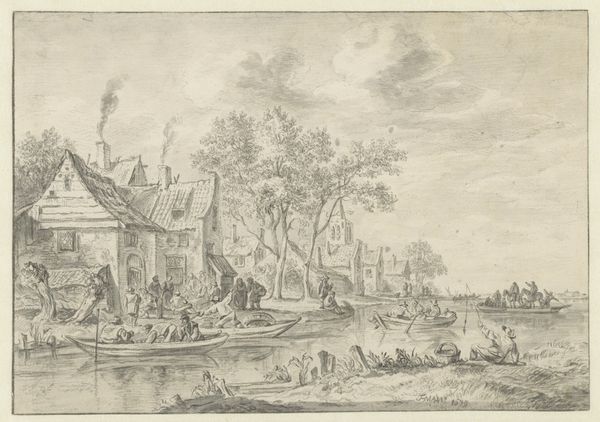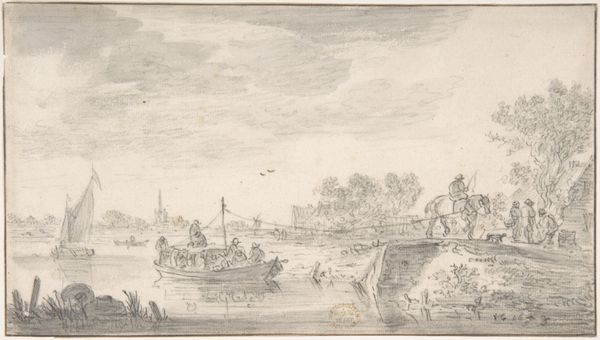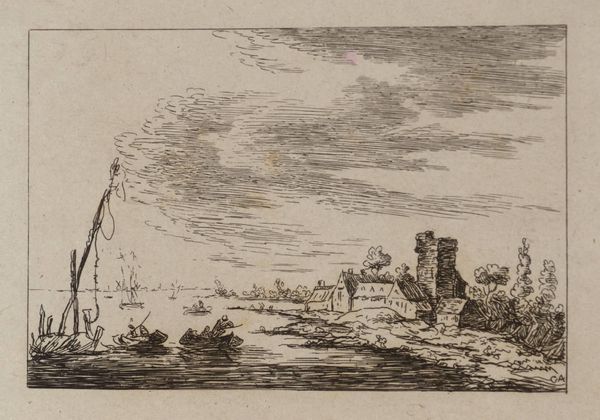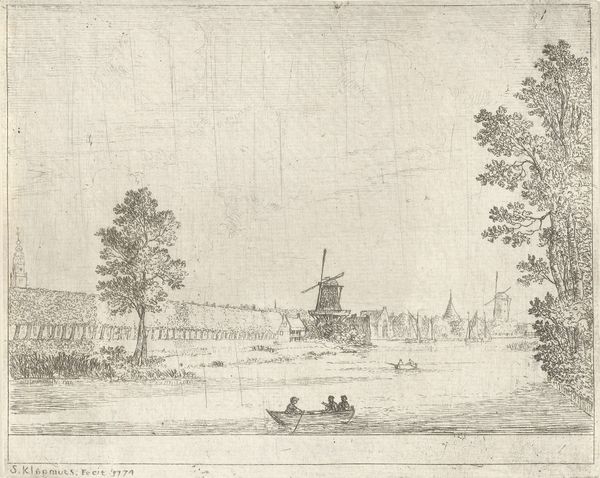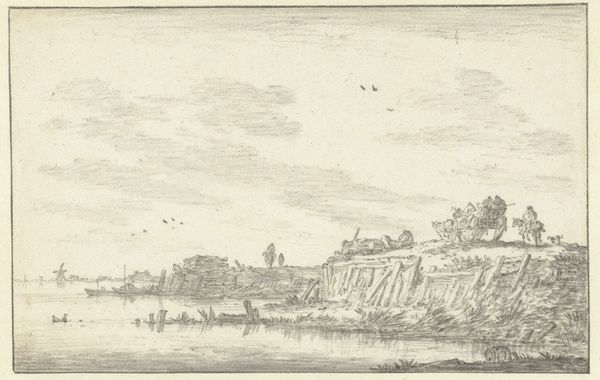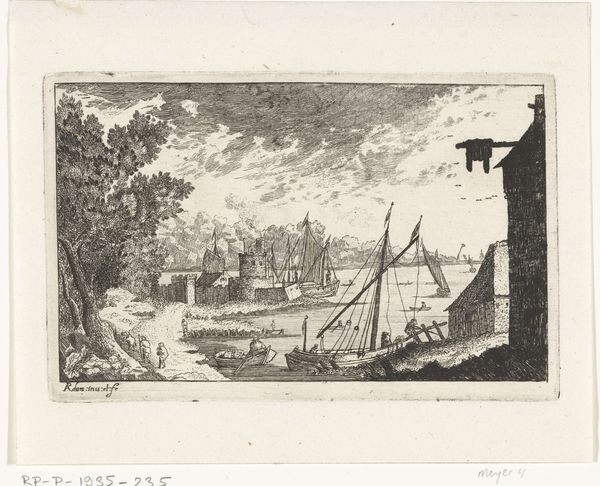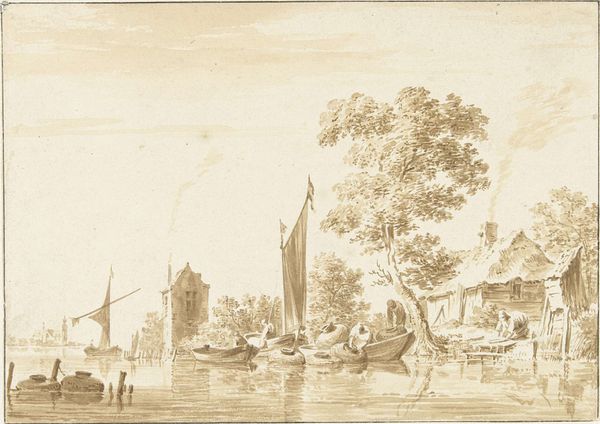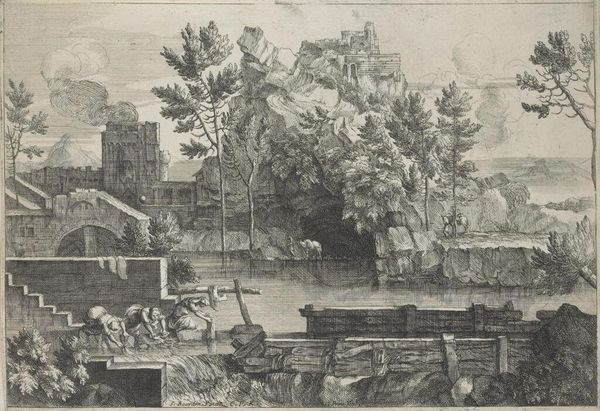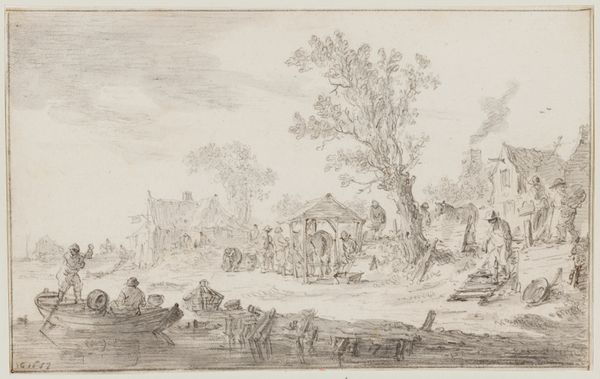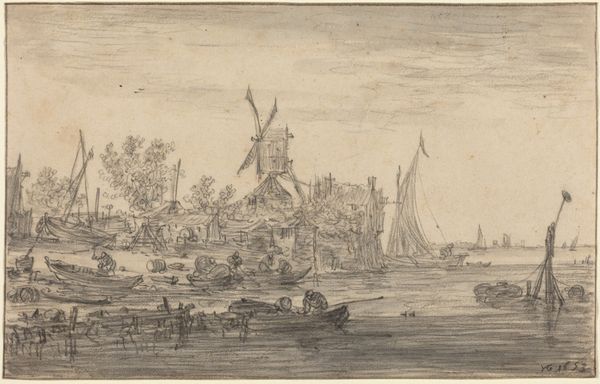
drawing, graphite
#
drawing
#
dutch-golden-age
#
landscape
#
graphite
#
realism
Dimensions: height 174 mm, width 280 mm
Copyright: Rijks Museum: Open Domain
Curator: Let's talk about Jan van Goyen's “River View with a Landing Stage with Lever Arms,” dating from 1653, here in the Rijksmuseum. Editor: It's mostly grayscale; even the water reflects it back in every little scribble of shading. Very still, quiet, almost melancholy. Curator: Van Goyen excelled in capturing the Dutch landscape. In terms of artistic influence, and indeed, social commentary, this work reveals the daily commerce happening across Dutch waterways. The location, which appears almost provincial at first glance, has the hallmarks of the international waterways crucial to the Golden Age trade. Editor: Do you see the subtle way he differentiates class? There are people in boats doing labor, loading and unloading by the pier and then the richer folks in buildings who are profiting from the working classes’ back-breaking efforts. Is van Goyen pointing out labor struggles in this landscape? Or even worse, perhaps being commissioned by wealthy landowners for propaganda and glorifying those same industries which hurt laborers. Curator: I think there's more nuance at play than mere glorification, though. It's about documenting a crucial, transforming period in the Dutch Golden Age when waterways became the great connectors, yes—to vast exploitation through international trade and national industries—but it simultaneously democratized interaction between rural provinces, like the one Van Goyen so intimately illustrates, and richer urban spaces. Even his use of graphite, rather than richer medium for painting like oil, supports my position that Van Goyen wanted his pieces accessible to those working class. Editor: Perhaps. I think this particular piece—look at the sky so heavy—indicates even the economic progress isn’t for everyone, or sustainable, as so many exploited laborers become the backs from which wealth is formed. This isn’t just about land; it's about who owns the land, and by extension, controls the people. Curator: I am left reflecting on how trade networks, however fraught, fundamentally reshaped labor— Editor: And about who can be "seen" and valued by those doing the painting and profiting from it.
Comments
No comments
Be the first to comment and join the conversation on the ultimate creative platform.
